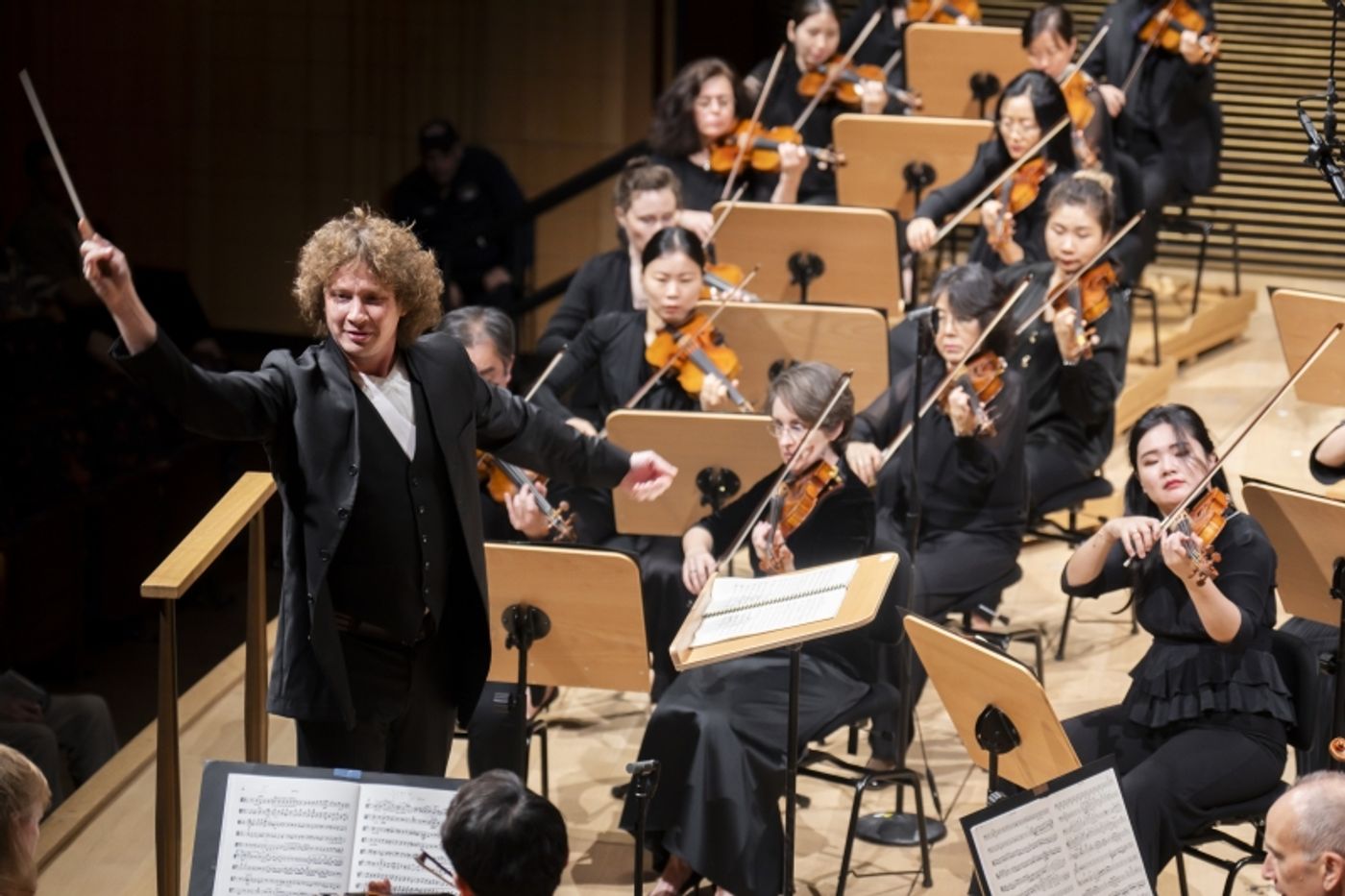Review: STRAUSS AND SIBELIUS at the NY Philharmonic
Miah Persson performed Richard Strauss’s Four Last Songs with conductor Santtu-Matias Rouvali and the New York Philharmonic at David Geffen Hall.

 Saturday night at David Geffen Hall, the New York Philharmonic, under the baton of Santtu-Matias Rouvali, presented a program featuring Julia Wolfe’s “Fountain of Youth”, Richard Strauss’s “Four Last Songs” with soprano Miah Persson and Sibelius’s Symphony No. 5. The evening promised a compelling journey through late Romantic lyricism and Nordic grandeur, yet the results were mixed.
Saturday night at David Geffen Hall, the New York Philharmonic, under the baton of Santtu-Matias Rouvali, presented a program featuring Julia Wolfe’s “Fountain of Youth”, Richard Strauss’s “Four Last Songs” with soprano Miah Persson and Sibelius’s Symphony No. 5. The evening promised a compelling journey through late Romantic lyricism and Nordic grandeur, yet the results were mixed.
Julia Wolfe's “Fountain of Youth”, is a vibrant, rhythmically charged exploration of humanity's enduring quest for vitality. Premiered in 2019, the piece blends propulsive rhythms with ethereal textures, creating a soundscape that is both modern and primal. Under Santtu-Matias Rouvali's dynamic baton, the orchestra delivered a thrilling performance, capturing the work’s playful energy and driving momentum. Particularly striking was the percussion section, whose relentless pulse anchored the piece’s exuberant character. Wolfe’s composition, rich in wit and vitality, reaffirmed her reputation as one of today’s most inventive and compelling voices in contemporary music.

From the moment Miah Persson stepped onto the stage, she exuded a serene confidence that perfectly matched the introspective nature of Strauss’s “Four Last Songs”. These lush, melancholic meditations on life and mortality demand a soprano with both technical precision and emotional depth, and Persson delivered on all fronts. Maestro Rouvali, however, seemed unable to find a happy balance between singer and orchestra and several of the more delicate passages were rendered entirely inaudible under the massive orchestration.
Persson’s voice, a crystalline yet warm soprano, carried the lyrical beauty of Strauss’s writing with remarkable clarity. Opening with “Frühling,” Persson captured the sense of renewal and fleeting joy with an understated elegance, her phrasing natural and unforced. The soaring lines of “September” unfolded with a sense of longing, as her voice blended seamlessly with the orchestra’s sumptuous strings. Particularly striking was her command of dynamic shading—her pianissimos were breathtaking, yet they never felt overly precious or detached.
In “Beim Schlafengehen,” the third song, the collaboration between Persson and Rouvali reached its peak. The New York Philharmonic’s concertmaster played the violin solo with an exquisite, singing tone that mirrored Persson’s vocal line, creating a moment of pure transcendence. Persson’s closing phrase, “Tiefe ist mein Glück,” was delivered with such heartfelt introspection that one could hear a pin drop in the hall.
The final song, “Im Abendrot,” is often the emotional crux of the cycle, and Persson handled it with both grace and gravity. As her voice floated over the orchestral textures, she seemed to embody the very soul of Strauss’s music—reflective, resigned, yet filled with a quiet radiance. The Philharmonic’s winds, in particular, provided an evocative counterpart, their birdlike figures adding a sense of closure to this musical farewell.
Rouvali was not quite as restrained as he needed to be to allow Persson to shine while drawing luminous colors from the orchestra. The interplay between soloist and ensemble was a bit of a wrestling match rather than a sensitive, shared vision of Strauss’s poignant farewell to life.
Sibelius’s Symphony No. 5, a work celebrated for its sweeping majesty and architectural grandeur, requires a conductor to bring out its contrasts and hidden depths. However, Rouvali’s interpretation felt oddly inert, failing to capture the symphony’s dynamic possibilities.
The opening of the first movement, with its rising horn motif and shimmering strings, lacked the sense of anticipation that should draw listeners into Sibelius’s expansive soundscape. While the orchestra played with technical competence, the phrasing often felt flat, and the transitions between sections were sometimes abrupt rather than organic.
The second movement, marked *Andante mosso, quasi allegretto*, fared slightly better, as Rouvali coaxed a tender, lyrical quality from the strings. However, even here, the performance lacked the kind of emotional nuance that makes Sibelius’s music so compelling. The interplay between light and shadow, joy and melancholy, was underdeveloped, leaving the movement feeling more like a pleasant interlude than a vital part of the symphony’s structure.
The final movement, with its iconic “swan theme,” should have been the emotional high point of the evening, but it fell disappointingly short. The brass, while solid, did not project the heroic grandeur required, and the climactic chords lacked the electrifying impact they should have delivered. Rouvali seemed hesitant to fully unleash the orchestra’s power, resulting in a performance that felt strangely muted and underwhelming.
PHOTOS: Chris Lee
Reader Reviews
Videos

